Over the past three-and-a-half years, the legal and institutional guardrails established over the course of our republic have proven insufficient to contain a lawless president, who this week threatened to send active-duty military forces onto the streets of American cities to suppress lawful protests. When formal guardrails for democracy weaken, informal societal guardrails remain: civic activism, public sentiment, and the voices of elite “influencers” like former Presidents George W. Bush and Barack Obama, and former Defense Secretary James Mattis. As of this week, America has entered a new phase, in which those societal guardrails are at the forefront of our struggle to sustain our democracy.
Mass public protests are perhaps the most visible, and often the highest-impact, form of civic engagement used to protect and advance democracy. This is an important, perhaps crucial, moment for mass mobilization. But the aggressive police response to protesters and the outrageous incitement by the president and other elected leaders have created an atmosphere of fear and anxiety around street protests. That anxiety is compounded by the concern that large gatherings of shouting people present ideal conditions for transmitting the coronavirus, still running rampant amongst American cities. Perfectly capturing this layered challenge, the Washington Post published a news story full of expert tips on “how to protest in a pandemic.” When President Trump took office, civic groups like Move On and the Women’s March organized mass actions that engaged millions. Today, because of the health risk, it’s hard to imagine millions of Americans going into the streets, even to protest the imminent militarization of our cities.
But coronavirus needn’t prevent anti-racism activists and other protest movements from generating and manifesting mass support for their cause, or from creating symbolically powerful, media-ready images and videos to get their message to the public, policymakers, and the world. For decades, protesters (many operating in authoritarian regimes where they couldn’t safely gather en masse) have found creative ways to spread their messages without marching, to demonstrate they have wide public support, and even to make protest action fun.
Many of these lessons have been captured by veteran activists and scholars, and shared. Two ready resources are a book by veteran Serbian activist Sjrda Popovic and Matthew Miller, called “Blueprint for Revolution: How to Use Rice Pudding, Lego Men, and Other Nonviolent Techniques to Galvanize Communities, Overthrow Dictators, or Simply Change the World”; and a website, book, and toolkit available at BeautifulTrouble.org.
Here are a few tactics creative activists have used abroad and at home, that are consistent with “social distancing,” and that U.S. protest movements can consider or are already adopting to sustain mobilization behind their cause despite the virus:
- Pots and pans: In 1964, Brazilians popularized a method of protest that made opposition to the government inescapably loud, without demanding people go into the streets. At a designated time, people go to their windows, porches, or roofs and bang loudly on pots and pans. Today, cacerolazos are a common form for protest in Latin America — Brazilians returned to the tactic as recently as March to protest President Jair Bolsonaro amidst their coronavirus quarantine. This week, cacerolazos took over the Washington, DC neighborhood of Mount Pleasant each evening at 7:00pm.
- Shouting from roofs: In Iran, calling simple slogans from rooftops is a form of protest that dates back to the Islamic Revolution of 1979. In 2009, opposition activists angry at what they said was a stolen election coopted this revolutionary protest tactic to shout their defiance of the supreme leader.
- Pingpong balls and MP3s: Syrian protesters in the first year of the uprising against President Bashar al-Assad were particularly creative in undertaking political actions that stymied police attempts to control or suppress dissent. The New York Times described a few: “Once, the capital’s main fountains were dyed a bloody red. Another time, protesters painted scores of Ping-Pong balls with words like ‘Leave’ and ‘Freedom’ in red and blue ink, and then released them on a hill above Mr. Assad’s house. A video shows them clattering down the cobblestones, and activists insist that frenzied security agents scoured the streets to collect them all.” A particularly clever protest involved wiring MP3 players to small speakers playing protest songs, and placing them in trash bins and sewers across the city. This forced Assad’s security forces to dig into trash to retrieve and silence the forbidden messages.
- Holding the line: In June 2010, Egyptian security forces pulled a young man, Khaled Said, out of an internet cafe and beat him to death in the street. But the country was under a strict and just-renewed emergency law that banned public gatherings. To skirt the law, tens of thousands of young Egyptians, each wearing black, took to the streets and stood silently, five meters apart. The protest was most visible on the bridges spanning the Nile River in downtown Cairo, where lines of dispersed young men and women could be seen up and down the river.
- Die-ins: In the United States, activists from ACTUP (AIDS Coalition to Unleash Power) pioneered creative and confrontational forms of protest, including covering Senator Jesse Helms’s house with canvas to resemble a condom. One oft-used ACTUP tactic has particular value in the age of social distancing: the “die-in.” Activists lying down and silently holding up slogans on tombstones, as ACTUP did at the Food and Drug Administration building in 1988, may face arrest for obstructing traffic, but they will not risk spreading infection by congregating in close quarters or shouting slogans.
- In addition to pingpong balls, activists have also launched balloons with messages, dropped confetti, and organized flash mobs for highly visible, but quickly dispersed, demonstrations.
These protests may seem lighthearted, even silly — and some might say that’s not befitting an issue as serious as police violence. But the silliness and theatricality of these exercises are very deliberate: They don’t just keep activists safe from government violence, they also demonstrate the bankruptcy of governments using coercive force to suppress public sentiment. It’s futile and ultimately ridiculous to watch armed officers face off against pingpong balls or trash cans. As Popovich explains in his book, getting citizens to laugh at their government’s overbearing response to these stunts reduces the effect of government intimidation, and weakens the authority of leaders who lean on security forces to appear strong and in control.
The Brookings Institution is committed to quality, independence, and impact.
We are supported by a diverse array of funders. In line with our values and policies, each Brookings publication represents the sole views of its author(s).

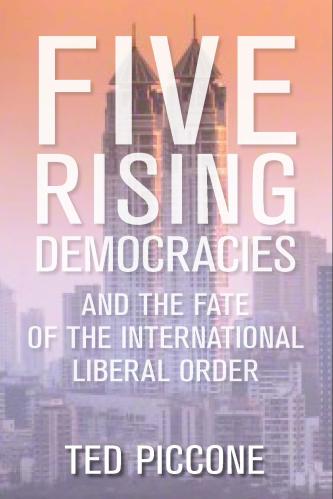
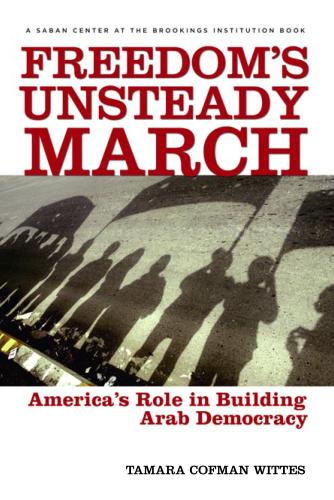
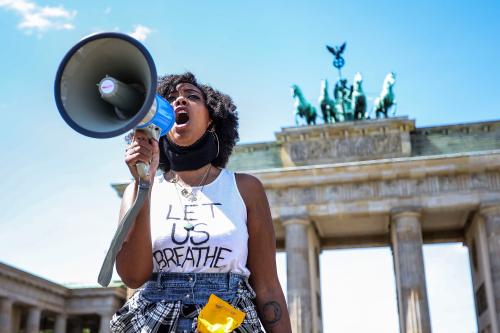
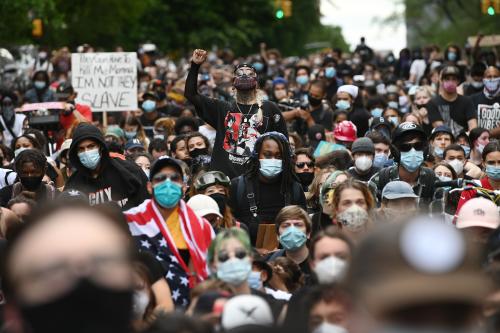
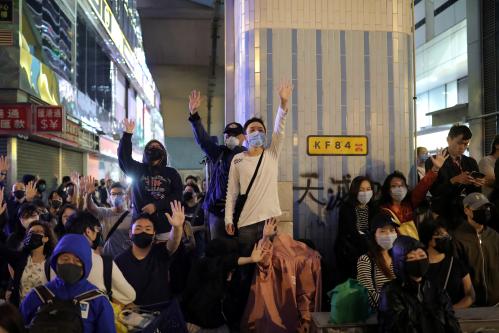


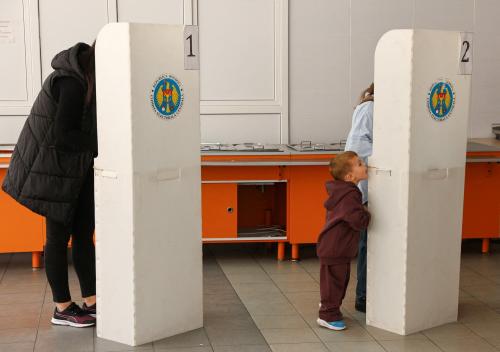

Commentary
Civil society creativity around the world can sustain protests in the coronavirus era
June 4, 2020